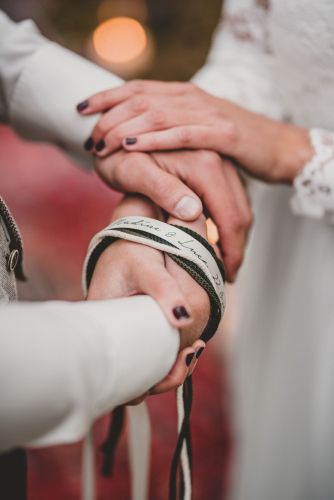 Weddings are not just a union of two people but also a celebration of culture, tradition, and often, the natural world. Among the diverse customs that highlight the global tapestry of wedding traditions, the use of animals in ceremonies stands out. These rituals, which often involve animals, underscore the deep connection between cultural practices and the animal kingdom, reflecting beliefs, bringing good luck, and sometimes even foretelling the future of the newlyweds.
Weddings are not just a union of two people but also a celebration of culture, tradition, and often, the natural world. Among the diverse customs that highlight the global tapestry of wedding traditions, the use of animals in ceremonies stands out. These rituals, which often involve animals, underscore the deep connection between cultural practices and the animal kingdom, reflecting beliefs, bringing good luck, and sometimes even foretelling the future of the newlyweds.
The White Wedding Horses of India
In India, particularly in Hindu weddings, the groom's arrival on a white horse is a significant part of the ceremony known as the "Baraat". The horse, beautifully adorned with vibrant fabrics and sometimes even jewels, symbolizes nobility, purity, and the historical significance of the groom's journey to his bride. This majestic animal is not only a spectacle for guests but is also seen as a bearer of good fortune and prosperity for the couple's future life together.
The Geese of a Korean Wedding
In traditional Korean weddings, a pair of geese or ducks plays a crucial role. These birds, usually carved from wood or sometimes real, are given by the groom to his mother-in-law in a ritual called "Jeonanrye". Geese mate for life, so they symbolize fidelity and the commitment the couple is making to each other. This thoughtful gesture highlights the values of loyalty and unity, which are central to Korean family life.
The Black Neck Crane Dance of Bhutan
In Bhutan, the black neck crane is an enduring symbol of peace and longevity, which makes its dance an auspicious sign at weddings. During some ceremonies, dancers wearing crane costumes perform elegant and symbolic dances that are believed to bring blessings and eternal love to the newlyweds. This ritual reflects the deep respect and harmony the Bhutanese people hold for their natural environment and its sacred animals.
The Butterfly Release Ritual
Popular in various countries, including the United States, the release of butterflies at the conclusion of the wedding ceremony is a visually stunning tradition. Each butterfly's flight symbolizes new beginnings and the hope for a joyful future. This practice not only adds a magical element to the celebration but also embodies the transformation the couple undergoes as they start their new life together.
The Camel Processions of Rajasthan
In the desert landscapes of Rajasthan, India, camels are integral to local weddings. Decorated in colorful attire and sometimes painted, camels feature in large processions that celebrate the journey of the groom to the wedding venue. These animals are not only practical in the sandy terrains but are also considered symbols of love and endurance, reflecting the long-lasting nature of the marriage being celebrated.
Sheep at Scottish Weddings
In some rural parts of Scotland, it’s considered good luck for the wedding procession to cross paths with a sheep. Sheep are symbols of innocence and abundance, and encountering one on the wedding day is believed to ensure a fruitful and prosperous marriage. In these communities, the presence of a sheep is a welcome sight at any wedding procession, embodying hopes for both wealth and a growing family.
The Role of Elephants in Thai Ceremonies
In Thailand, elephants are often part of the wedding day, especially in traditional ceremonies in regions where these majestic creatures are revered. The elephant is considered a symbol of strength, good luck, and prosperity. Having an elephant at a wedding is believed to bless the union with these qualities, especially if the couple gets an opportunity to feed and interact with the animal during the ceremony.
These wedding rituals featuring animals highlight the richness of cultural diversity and the various ways in which societies value and respect the natural world. They remind us that animals are not only vital to our ecosystems but are deeply ingrained in our cultural expressions and celebrations of life's significant moments. Each tradition, with its unique symbolism and significance, adds to the depth and beauty of the matrimonial union, making the ceremony memorable not just for the couple but for all who participate.
Add Your Comment